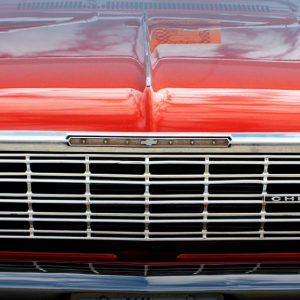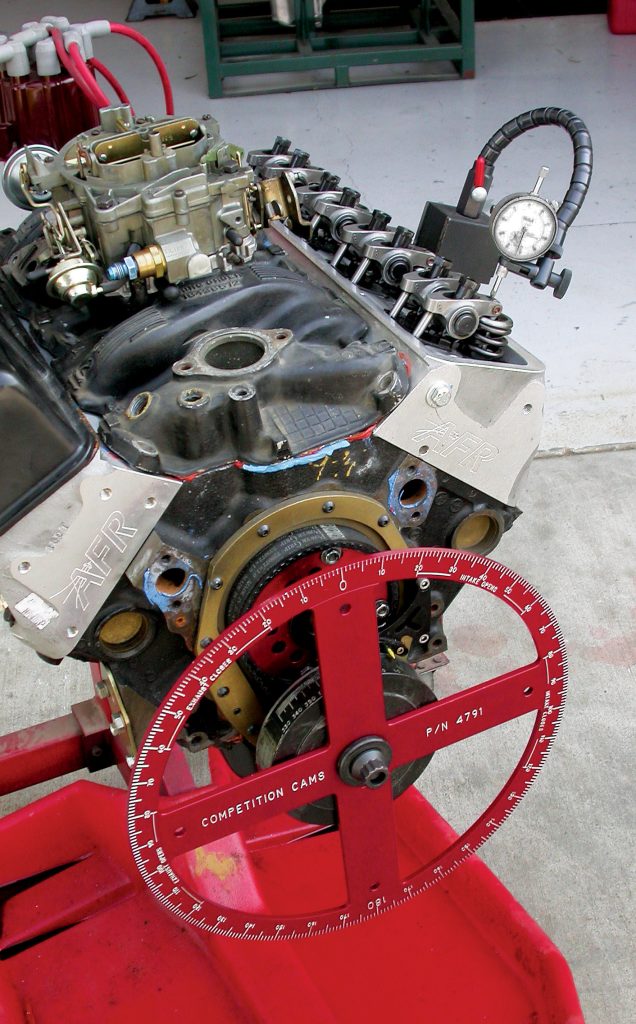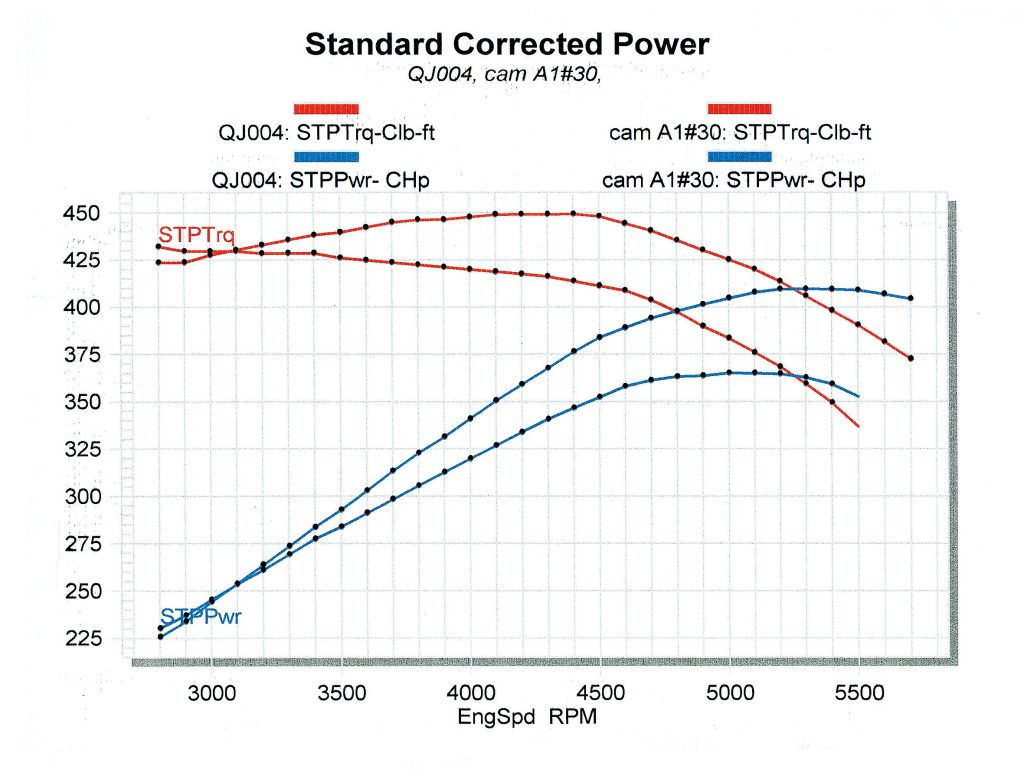
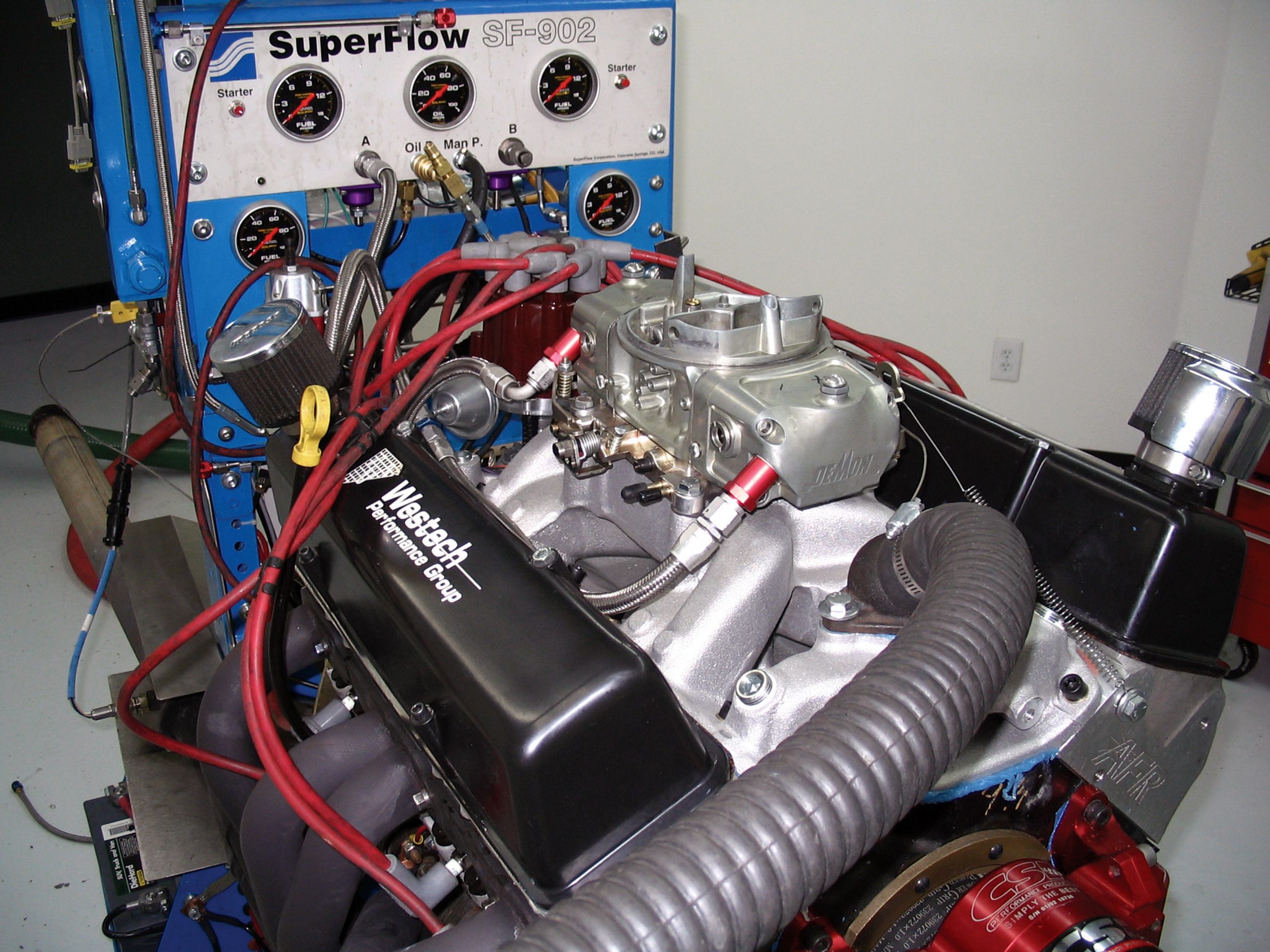

THE AUTO BUILDER
Featured
- All Post
- 20 High Priority - SR Super Rod
- Builds
- 25 High Priority - FB Ford Builder
- Cars
- 30 High Priority - AR American Rodder
- 01 Post Status
- 35 High Priority - RD Rodders Digest
- 40 High Priority - OTR On the Road
- 45 High Priority - SRB Street Rod Builder
- 50 High Priority - TB Truck Builder
- 55 High Priority - BSCENE Buckaroo Scene
- 60 High Priority - FPB Family Power Boat
- Trucks
- Swaps
- Performance Boats
- _000 Home Sliders
- Builders
- 00 Sidebars
- Manufacturers
- 05 High Priority - HCI Hot Compact Imports
- 05 Publications
- 10 High Priority - CR Chevy Rumble
- Back
- Chassis
- Engine
- Fuel System
- Electrical
- Exhaust
- Transmission / Drivetrain
- Suspension
- Steering
- Brakes
- Wheels and Tires
- Interior
- Exterior
- Accessories
- Power Adders
- Back
- Chassis
- Engine
- Fuel System
- Electrical
- Exhaust
- Transmission / Drivetrain
- Suspension
- Steering
- Brakes
- Wheels and Tires
- Interior
- Exterior
- Accessories
- Power Adders
- Back
- Chassis
- Engine
- Electrical
- Exhaust
- Fuel System
- Transmission / Drivetrain
- Suspension
- Steering
- Brakes
- Wheels and Tires
- Interior
- Exterior
- Accessories
- Power Adders
- Back
- Chassis
- Engine
- Electrical
- Exhaust
- Fuel System
- Transmission / Drivetrain
- Suspension
- Steering
- Brakes
- Wheels and Tires
- Interior
- Exterior
- Accessories
- Power Adders
- Back
- Chassis
- Engine
- Fuel System
- Electrical
- Exhaust
- Transmission / Drivetrain
- Suspension
- Steering
- Brakes
- Wheels and Tires
- Interior
- Exterior
- Accessories
- Power Adders
- Back
- Chassis
- Engine
- Fuel System
- Electrical
- Exhaust
- Transmission / Drivetrain
- Suspension
- Steering
- Brakes
- Wheels and Tires
- Interior
- Exterior
- Accessories
- Power Adders
- Back
- Chassis
- Engine
- Fuel System
- Electrical
- Exhaust
- Transmission / Drivetrain
- Suspension
- Steering
- Brakes
- Wheels and Tires
- Interior
- Exterior
- Accessories
- Power Adders
- Back
- Engine
- Fuel System
- Electrical
- Outdrives
- Steering
- Interior
- Accessories
- Power Adders
- Exterior and Hull
- Back
- Chassis
- Engine
- Electrical
- Exhaust
- Fuel System
- Transmission / Drivetrain
- Suspension
- Steering
- Brakes
- Wheels and Tires
- Interior
- Exterior
- Accessories
- Power Adders
- Back
- Chevrolet
- Cadillac
- Pontiac
- AMC
- Buick
- Jeep
- Lincoln
- Ford
- Honda
- GMC
- BMW
- Mitsubishi
- Dodge
- Nissan
- Chrysler
- Subaru
- Toyota
- Plymouth
- Mercury
- Volvo
- Volkswagen
- Oldsmobile
- Acura
- Back
- 05 Pub HCI Hot Compact Imports
- 15 Pub 4x4 4x4 Builder
- 20 Pub SR Super Rod
- 25 Pub FB Ford Builder
- 30 Pub AR American Rodder
- 35 Pub RD Rodders Digest
- 40 Pub OTR On the Road
- 55 Pub BSCENE Buckaroo Scene
- 10 Pub CR Chevy Rumble
- 50 Pub TB Truck Builder
- 60 Pub FPB Family Power Boat
- 45 Pub SRB Street Rod Builder
- Back
- Chip Foose
- Ring Brothers
- Jack Fuller
- Bob Cullipher
- Jerry Nichols
- Bobby Alloway
- Jesse James
- Carl Casper
- J.F. Launier
- Steve Sellers
- Boyd Coddington
- Rad Rides by Troy
- Cal Auto Creations
- George Barris
- West Coast Customs
- Back
- Street Rods
- Hot Rods
- Late Model
- Drag Race
- Handling
- Compact Cars
- Chassis
- Engine
- Fuel System
- Electrical
- Exhaust
- Transmission / Drivetrain
- Suspension
- Steering
- Brakes
- Wheels and Tires
- Interior
- Exterior
- Accessories
- Power Adders
- Chassis
- Engine
- Fuel System
- Electrical
- Exhaust
- Transmission / Drivetrain
- Suspension
- Steering
- Brakes
- Wheels and Tires
- Interior
- Exterior
- Accessories
- Power Adders
- Chassis
- Engine
- Electrical
- Exhaust
- Fuel System
- Transmission / Drivetrain
- Suspension
- Steering
- Brakes
- Wheels and Tires
- Interior
- Exterior
- Accessories
- Power Adders
- Chassis
- Engine
- Electrical
- Exhaust
- Fuel System
- Transmission / Drivetrain
- Suspension
- Steering
- Brakes
- Wheels and Tires
- Interior
- Exterior
- Accessories
- Power Adders
- Chassis
- Engine
- Electrical
- Exhaust
- Fuel System
- Transmission / Drivetrain
- Suspension
- Steering
- Brakes
- Wheels and Tires
- Interior
- Exterior
- Accessories
- Power Adders
- Chassis
- Engine
- Fuel System
- Electrical
- Exhaust
- Transmission / Drivetrain
- Suspension
- Steering
- Brakes
- Wheels and Tires
- Interior
- Exterior
- Accessories
- Power Adders
- Back
- 05 Post Imported
- 20 Post Missing Images (All)
- 25 Post Missing Images (Partial)
- 15 Post In Progress
- 30 Post Internal Review
- 40 Post On Hold
- 50 Post Approved
- 10 Post Images Imported
- 17 Post Missing TXT Files
- 18 Post Missing PDF Files
- 27 Post Missing Content
- Back
- Chassis
- Engine Swaps
- Interior Swaps
- Driveline
- Back
- Street Trucks
- OffRoad Trucks
- Chassis
- Engine
- Fuel System
- Electrical
- Exhaust
- Transmission / Drivetrain
- Suspension
- Steering
- Brakes
- Wheels and Tires
- Interior
- Exterior
- Accessories
- Power Adders
- Chassis
- Engine
- Fuel System
- Electrical
- Exhaust
- Transmission / Drivetrain
- Suspension
- Steering
- Brakes
- Wheels and Tires
- Interior
- Exterior
- Accessories
- Power Adders
- Back
- 01 Sidebar Left
- 01 Sidebar Right
Spotlighter
POPULAR READS
Dialed In
Simple Steps to Improve the Performance of Your Engine
Author

Richard Holdener
Story & Photography
Does your motor have a fresh, unrestricted supply of cold air?
How’s your air cleaner? Was it selected to optimize airflow, or chosen for looks or price?
Does your electric or mechanical engine fan allow the motor to run over 200 degrees? Cooler water temps will allow the motor to produce more power, so items like cooling fans, thermostat operational temps, and even water pump speeds, can collectively influence power production. An electric cooling fan(s), for example, will eliminate the parasitic loss associated with driving a mechanical fan, thereby improving power.
Attention to all of these little things will begin to add up, power wise, and can be the difference between an ordinary small-block Chevy and one that runs extraordinarily well. This, of course, assumes you successfully chose the major performance components properly in the first place.
For this test we decided to illustrate the power gains associated with a major change, and then with some attention to detail for an existing performance component. Our test motor was a 350 Chevy that started life as a ZZ4 crate motor. The engine was then upgraded with a set of CNC-ported Air Flow Research 190 aluminum cylinder heads, as well as an Xtreme Energy XE256H cam. The hydraulic flat-tappet camshaft was chosen for its exceptional combination of performance and streetability, as the dual-pattern cam profile offered a 0.447/0.454-inch lift split, a 212/218 duration split and a 110-degree lobe separation angle. According to the Comp catalog, the Xtreme Energy cam was supposed to provide optimum performance from 1,000 rpm to 5,200 rpm. To prove this claim, we found that, using this cam, our engine produced peak power at 5,100 rpm. When it comes to cam recommendations, we have found that Comp’s research is well-founded—the company knows what it’s talking about.
To illustrate the gains offered by an induction upgrade, we topped the AFR heads with a factory four-barrel intake and carburetor. The GM aluminum performance intake was designed to accept the factory 750cfm Q-Jet carb, a combination that over time has proven itself a capable performer in terms of airflow, throttle response and fuel economy.
Our 350 was typically installed on the engine dyno using Hooker 1-1/2-inch Camaro headers. Other components used on the 350 included a set of 1.5:1-ratio roller rockers, an MSD ignition and a CSI electric water pump. Equipped with the Q-Jet aluminum intake and carb, the small block produced 365 hp at 5,100 rpm, and an impressive 430 lb-ft at just 2,900 rpm. For a street rod or street machine application, the 365hp engine would be perfectly adequate, especially given the impressive torque curve that exceeded 400 lb-ft from 2,800 rpm to 4,700 rpm. Credit the mild, but powerful, XE256H cam and dual-plane Q-Jet intake for this impressive torque production.
While 400 hp makes a car fast, 400 lb-ft of torque makes it enjoyable. Replacing the Q-Jet setup with a Barry Grant 650 Speed Demon and Edelbrock Performer RPM Air Gap intake resulted in even more impressive power gains. The peak numbers jumped from 365 hp at 5,100 rpm to 410 hp at 5,300 rpm. The peak torque was up as well, from 430 lb-ft at 2,900 rpm to a more impressive 450 lb-ft, at 4,300 rpm. While the induction upgrade shifted the peak torque from 2,900 rpm to 4,300 rpm, the engine still exceeded 400 lb-ft from 2,800 rpm to 5,400 rpm, and more than 425 lb-ft from 2,800 rpm to 5,000 rpm. With 450 lb-ft of torque, it is not likely you would be lacking in acceleration; and even more important, with such a mild combination of well-detailed parts, properly maintained, the power should last forever.
While the induction upgrade netted impressive power, you might say it was almost expected. Though effective, the stock GM intake and Q-Jet does leave a lot to be improved upon, making a carb and intake swap an obvious good choice to improved performance. Less obvious are the subtle touches that can also lead to more hidden power.
Although not quite on par with the gains achieved by the induction system upgrade, combining the gains achieved through a number of small changes do add up. Case in point: degreeing the camshaft. When you purchase a camshaft from any cam manufacturer, it will come with a cam card listing all of the important data associated with that particular cam grind. Included on the cam card are the basics such as lift, duration and lobe separation angle, but so too are the recommended intake centerline and associated valve timing events. These opening and closing points, in crankshaft degrees, depend on the cam’s installed position relative to the crank. Advancing these events usually improves the low-speed power, while retarding the events generally improves top-end power. Unfortunately, the improvements usually come with a loss elsewhere, as there is almost always a trade-off.
Degreeing the camshaft is how you determine if the camshaft is installed to the recommended manufacturer’s specifications. Given production tolerances in the timing gear, timing chain (or belt), the physical distance between the cam and crank centerlines, and even in the cam profile itself, it is not uncommon for the cam installation to be advanced or retarded from its recommended installed position. To dial in the cam during installation, it must be degreed to learn exactly where the cam timing is placed in relation to the crankshaft (in degrees). That will tell you exactly how much you should advance or retard the cam, so that you can make the necessary cam timing adjustment to achieve the desired cam/crank position. Most enthusiasts do not go through the ordeal of degreeing the cam in the engine while performing its installation. That’s a mistake.
When doing a cam swap, unless you have the proper tools and dial indicator setup that fits within the confines of your installation, degreeing a camshaft with the engine in the car is more difficult than degreeing in a camshaft on an engine stand. So, it goes without saying, it is quicker and easier to perform this important task when initially building a motor during initial assembly. A proper cam orientation is one of the industry’s speed secrets, tricks of the trade, so to speak, as a properly indexed camshaft can yield impressive power gains. To illustrate this point, we installed our XE256H Xtreme Energy cam in the straight-up position (matching timing marks). This is exactly where more enthusiasts would generally install the cam, at least those not considering the importance of this significant step. We then dialed it in using an external (adjustable) belt drive, but you can do it with adjustable timing gears or offset cam keys or offset timing buttons, whichever your engine uses. By advancing and retarding the cam in this manner, we were able to find the ideal position that provided the best overall power curve for our combination. This is important, as knowing going in is not only a good place to start but will also allow less guesswork if you need to tailor the power curve to better complement a particular vehicle installation (vehicle weight, transmission, rear gear ratio, driving habits, etc.). Once you have determined where that particular cam falls within the engine, crank timing wise, it will be easier to “fine-tune” for the proper power where you can use it most.
Our cam was installed straight up—the “0” position on our belt drive—and run on the dyno. So equipped, the motor produced 404 hp and 448 lb-ft of torque. Degreeing the cam (prior to installation on the dyno) revealed that the “0” position was actually 3 degrees advanced from the recommended intake centerline listed on the cam card. Knowing this, we retarded the cam timing by 3 degrees to produce the cam timing recommended by the Comp Cams cam card. Retarding the cam 3 degrees, from its over- advanced position, resulted in a jump to 410 hp and 450 lb-ft of torque. While a 6-hp gain cannot be considered huge, at 5,600 rpm, the change in cam timing added as much as 10 hp. If you find 10 extra horsepower from degreeing the cam, think about what might be had from a proper distributor advance, carb jetting or adjusting the lash. It is easy to change the intake manifold and carburetor, but once you reach a certain point, you have to start looking for all the little gains that can add significantly to your overall power number. Measured one at a time, each gain may not seem like much, but if you can obtain 10 hp from degreeing the cam, 6 hp more from changing the advance curve and another 8 hp from tightening the lash, those small gains ultimately equate to 24 hp!
Don’t expect to keep finding hidden horsepower indefinitely, but there is extra power to be had from optimizing your existing combination, even without making major hard part changes. All it takes is time, effort and the desire for more power.
GM Intake & Q-Jet vs. Barry Grant Speed Demon & Edelbrock Performance RPM Air Gap
When it comes to improving the performance of a small-block Chevy, one of the key areas that will yield large dividends is the induction system. Obviously, the factory carburetion, even a performance-oriented combination, was not designed solely for optimum performance. Performance carburetors and intake manifold designs have come a long way since Chevy replaced the carburetor with fuel injection. To illustrate the gains offered by improvements to the induction system, we ran our small-block test motor with a factory GM aluminum intake and Q-Jet carburetor. After optimizing the Q-Jet combination, we installed a Barry Grant Speed Demon carburetor and Edelbrock Performer RPM Air Gap intake manifold. Equipped with the Q-Jet and aluminum GM intake, the 350 Chevy produced 365 hp and 430 lb-ft of torque. Replacing the GM components with the BG Speed Demon and RPM Air Gap resulted in a jump in power to 410 hp and 450 lb-ft of torque. The peak-to-peak gain was 45 hp, while the induction upgrade offered as much as 54 hp at 5,500 rpm.
Effect of Cam Timing: Straight Up vs. 3 Degrees Advanced
One of the performance secrets used by professional engine builders is dialing in the cam timing. While most of us are happy installing our new performance cam in the straight-up position (as indicated by the timing gear), the reality is that the production tolerances in the timing gear, the center-to-center distance between the cam and crank and even in the cam itself, can produce inaccurate cam timing. The cam specs (as listed on the cam card) require the cam to be installed in a predetermined position relative to the crank to produce precise opening and closing valve events relative to piston position. If the opening and closing events occur too early or too late, performance can suffer. To illustrate the effect of dialing in the cam timing, we installed our Xtreme Energy XE256H cam in the straight-up position (as indicated by a “0” mark on our adjustable belt drive). Using a degree wheel, we measured the cam position and found that this timing point actually put the cam 3 degrees advanced, from the recommended position (on the cam card). Many cam manufacturers grind the cam with 2 to 4 degrees advance to make up for chain stretch that will retard cam timing. We ran the motor in this advanced configuration and then dialed the cam timing back to the actual zero point. Running the cam as recommended by Comp Cams resulted in a jump in power from 404 hp to 410 hp. Elsewhere on the curve, the cam timing added as much as 10 hp, with no loss in low-speed torque.
ARTICLE SOURCES
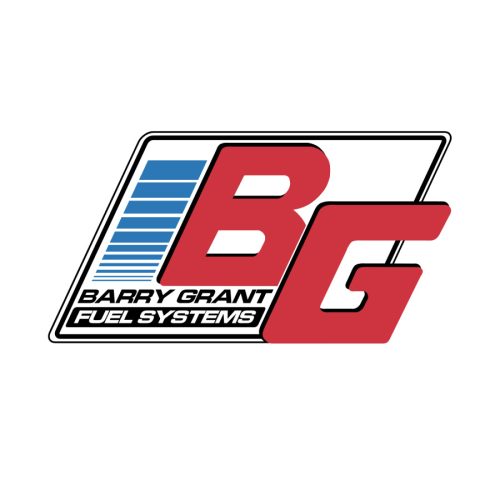
Barry Grant, Inc.
1450 McDonald Rd.
Dahlonega, GA 30533
706/864-8544
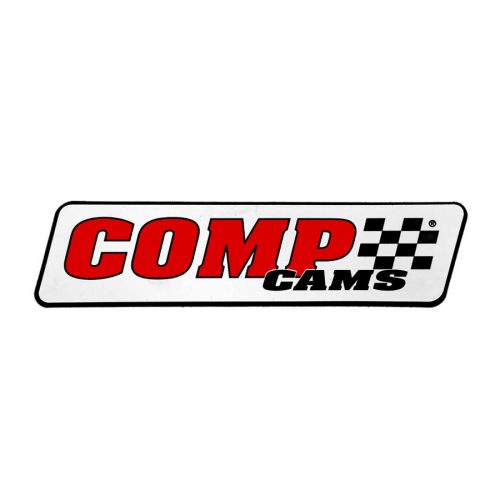
Comp Cams
3406 Democrat Rd.
Memphis, TN 38118
901/795-2400





